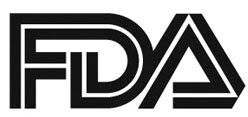Naxitamab BLA Seeks FDA Approval for High-Risk Neuroblastoma
A Biologics License Application has been submitted to the FDA for the potential approval of naxitamab for the treatment of patients with relapsed or refractory high-risk neuroblastoma.

A Biologics License Application (BLA) has been submitted to the FDA for the potential approval of naxitamab for the treatment of patients with relapsed or refractory high-risk neuroblastoma.1
The BLA from developer Y-mAbs Therapeutics was submitted through the FDA’s Rolling Review program and is based of findings from 2 pivotal phase II trials. Further findings from the trials will be presented later this year.
“With this submission, we look forward to working with the Agency to bring naxitamab to appropriate patients. We are excited to complete this submission and believe naxitamab can address a significant unmet medical need for children with relapsed/refractory high-risk neuroblastoma,” Claus Moller, MD, PhD, the CEO of Y-mAbs Therapeutics, said in a statement.
Findings from the Study 12-230 (NCT01757626) were presented at the International Society of Pediatric Oncology (SIOP) Annual Congress in October 2019.2Of 28 patients with primary refractory high-risk neuroblastoma, the overall response rate (ORR) was 78%. At 2 years, the progression-free survival (PFS) rate was 50%. One patient developed human anti-human antibody so the treatment was deferred.
In a second group from the trial of 30 evaluable patients who were resistant to salvage therapy, most of whom had relapsed 2 or more times, a 2-year PFS rate of 36% was achieved and an ORR of 37%. Four patients became human anti-human antibody positive. Modest toxicity and low immunogenicity were observed in this population.
Among patients treated in second or later remission who received naxitamab with granulocyte-macrophage colony-stimulating factor (GM-CSF) as maintenance therapy, a 2-year PFS rate of 52% was reported. Eleven patients became human anti-human antibody positive.
Across the 3 subsets, toxicities were in line with previous reports of the safety profile for naxitamab.
In safety findings from a phase I dose-escalation trial for naxitamab with GM-CSF in patients with resistant neuroblastoma, common adverse events reported in cycle 1 or 2 included urticaria, fever, hypotension, pruritis, emesis, and cough. Frequent hematologic toxicities included hyperglycemia, hypoalbuminemia, alanine aminotransferase increase, hypocalcemia, and aspartate aminotransferase increase. The most common grade 3/4 adverse events were respiratory events, alanine aminotransferase increase, and hypokalemia.3
Naxitamab is a GD2-targeted monoclonal antibody. The investigational immunotherapy agent, which was created at Memorial Sloan Kettering Cancer Center, received a Breakthrough Therapy designation from the FDA in September 2018 for the treatment of patients with relapsed/refractory high-risk neuroblastoma.
References
- Y-mAbs Announces Submission of Naxitamab Biologics License Application to U.S. FDA [news release]. New York: Y-mAbs Therapeutics Inc.; April 1, 2020. https://bit.ly/2xFwsCv. Accessed April 2, 2020.
- Y-mAbs Announces Naxitamab Update [news release]. New York: Y-mAbs Therapeutics Inc.; October 25, 2019. https://bit.ly/3dShBoA. Accessed April 2, 2020.
- Kushner BH, Cheung IY, Modak S, et al. Humanized 3F8 Anti-GD2 Monoclonal Antibody Dosing With Granulocyte-Macrophage Colony-Stimulating Factor in Patients With Resistant Neuroblastoma.JAMA Oncol.2018;4(12):1729-1735. doi: 10.1001/jamaoncol.2018.4005.
FDA Approves FoundationOne CDx as Companion Diagnostic for Tovorafenib in Pediatric Low-Grade Glioma
January 17th 2025FoundationOne CDx is now FDA-approved as the first companion diagnostic for tovorafenib, enabling targeted treatment for relapsed/refractory pediatric low-grade glioma with BRAF mutations or rearrangements.
Read More